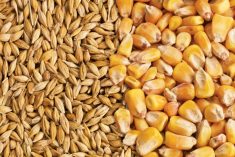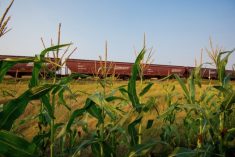CNS Canada — Record-setting rain and floods in North Carolina caused by Hurricane Florence have destroyed the state’s poultry sector with 3.4 million chickens and turkeys reported killed. Pig losses are estimated at 5,500.
Widespread power outages and flooded roads are making it difficult to get help to abandoned livestock operations. The state is home to about nine million hogs. Concerns about overflowing pig manure lagoons, while a concern, where not directly affecting downstream drinking water.
Many fields of corn, tobacco, soybeans, cotton and peanuts also remain underwater and it will take several more days to learn the true extent of the damage.
Read Also

Brazil to reap record soy crop in 2025/2026, increase exports
Brazil’s Conab said the country will reap a record soybean crop of 177.6 million tons in the 2025/2026 harvest year, according to data released on Thursday.
Tobacco appears to be the crop most affected by the storm with the state producing about 50 per cent of the national production, worth about US$725 million, based on U.S. Department of Agriculture data.
Insects and climate change scenario
Main grain-producing areas of Canada and the U.S. could see rapid increases in crop-damaging insects as global temperatures rise, according to researchers at the University of Washington and the University of Colorado, Boulder.
A new study reveals temperature increases are likely to spark population growths in grasshoppers, caterpillars and other insects that devour crops in temperate regions.
The researchers found that a rise in temperature may speed insect metabolism and boost their appetites and reproduction rates. Those metabolic and reproductive rates levelled off in models where temperatures reached that of the tropics, so those regions are likely to be less affected.
The study had drawn some criticism for failing to account for the increase in predators that consume the harmful insects, but it illustrates the need protect food security.
The study suggests overall yields will decrease as growing-season temperatures rise. Wheat, rice and corn yield losses to insects may increase by 10-25 per cent for every degree Celsius of warming, it said.
U.S. crop progress
Corn crops across 18 states responsible for 92 per cent of all U.S. corn acreage in 2017 are 93 per cent in the dent stage, according to data from USDA.
That’s above the five-year average of 86 per cent normally at the dent stage this time of year.
Meanwhile, 54 per cent of corn was rated as mature, above the five-year average of 36 per cent and nine per cent had been harvested as of Sept. 16.
In soybeans, 53 per cent of plants were dropping leaves in the 18 states that accounted for 95 per cent of the 2017 soybean acreage. That’s above the five-year average of 36 per cent. USDA data showed six per cent of soybeans had been harvested in those states, which compares to the five-year average of three per cent.













